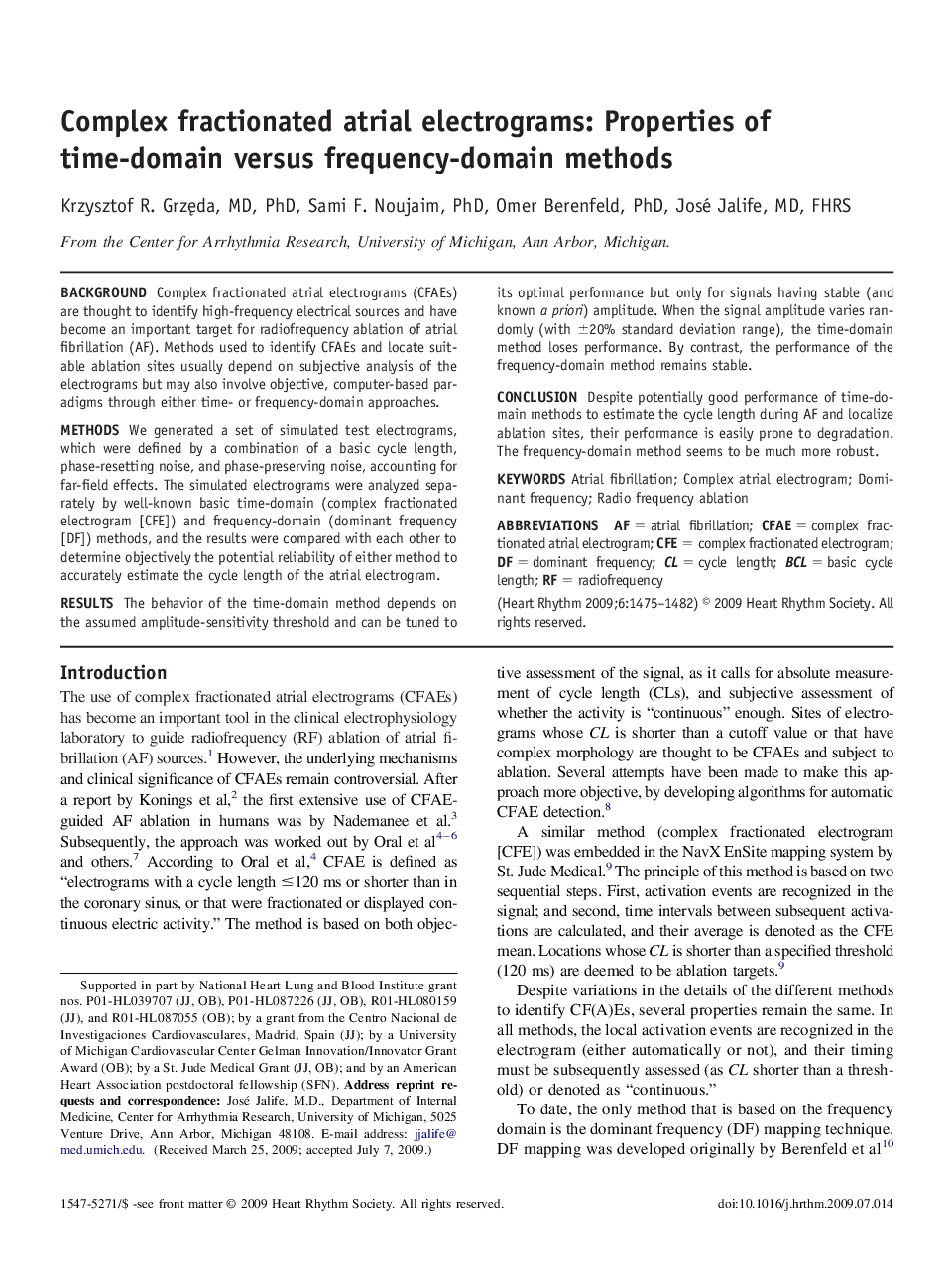| Article ID | Journal | Published Year | Pages | File Type |
|---|---|---|---|---|
| 2924273 | Heart Rhythm | 2009 | 8 Pages |
BackgroundComplex fractionated atrial electrograms (CFAEs) are thought to identify high-frequency electrical sources and have become an important target for radiofrequency ablation of atrial fibrillation (AF). Methods used to identify CFAEs and locate suitable ablation sites usually depend on subjective analysis of the electrograms but may also involve objective, computer-based paradigms through either time- or frequency-domain approaches.MethodsWe generated a set of simulated test electrograms, which were defined by a combination of a basic cycle length, phase-resetting noise, and phase-preserving noise, accounting for far-field effects. The simulated electrograms were analyzed separately by well-known basic time-domain (complex fractionated electrogram [CFE]) and frequency-domain (dominant frequency [DF]) methods, and the results were compared with each other to determine objectively the potential reliability of either method to accurately estimate the cycle length of the atrial electrogram.ResultsThe behavior of the time-domain method depends on the assumed amplitude-sensitivity threshold and can be tuned to its optimal performance but only for signals having stable (and known a priori) amplitude. When the signal amplitude varies randomly (with ±20% standard deviation range), the time-domain method loses performance. By contrast, the performance of the frequency-domain method remains stable.ConclusionDespite potentially good performance of time-domain methods to estimate the cycle length during AF and localize ablation sites, their performance is easily prone to degradation. The frequency-domain method seems to be much more robust.
